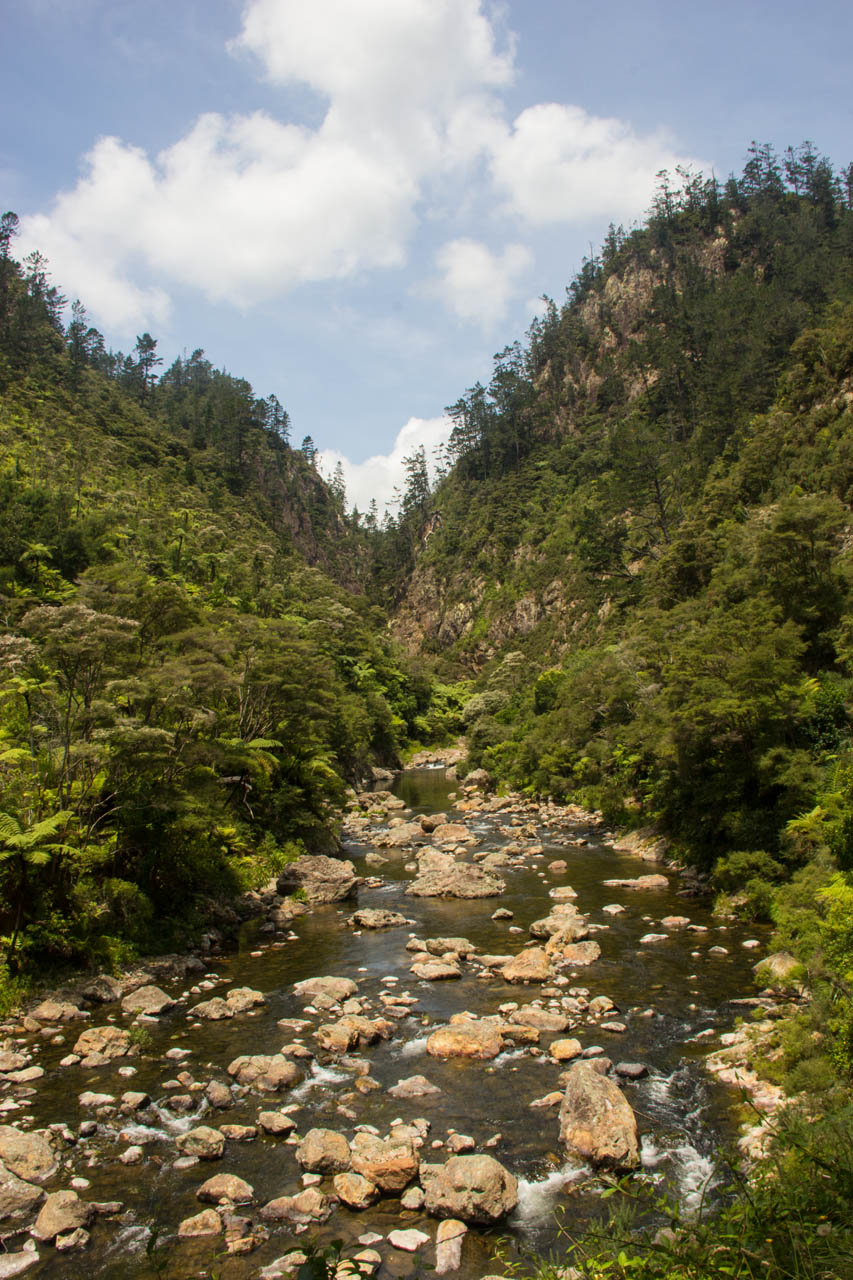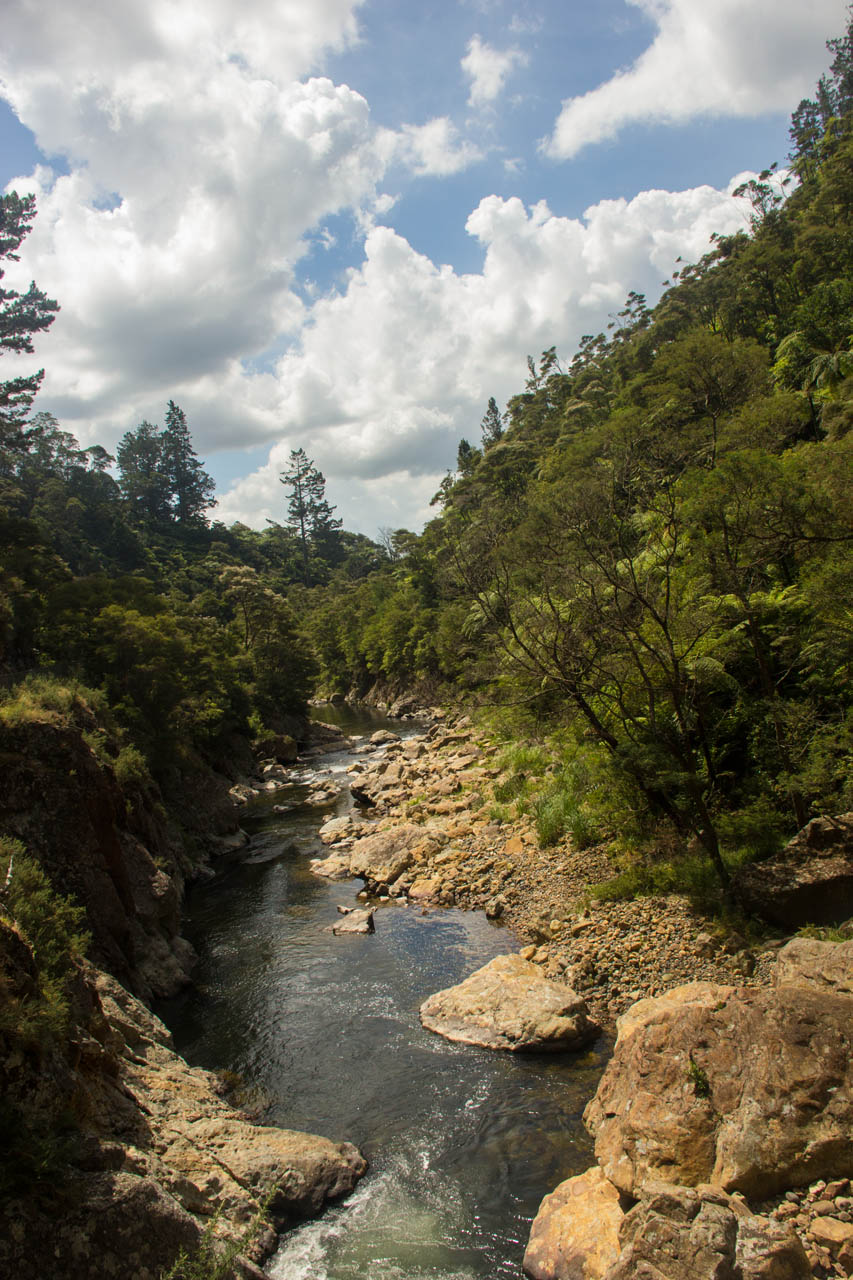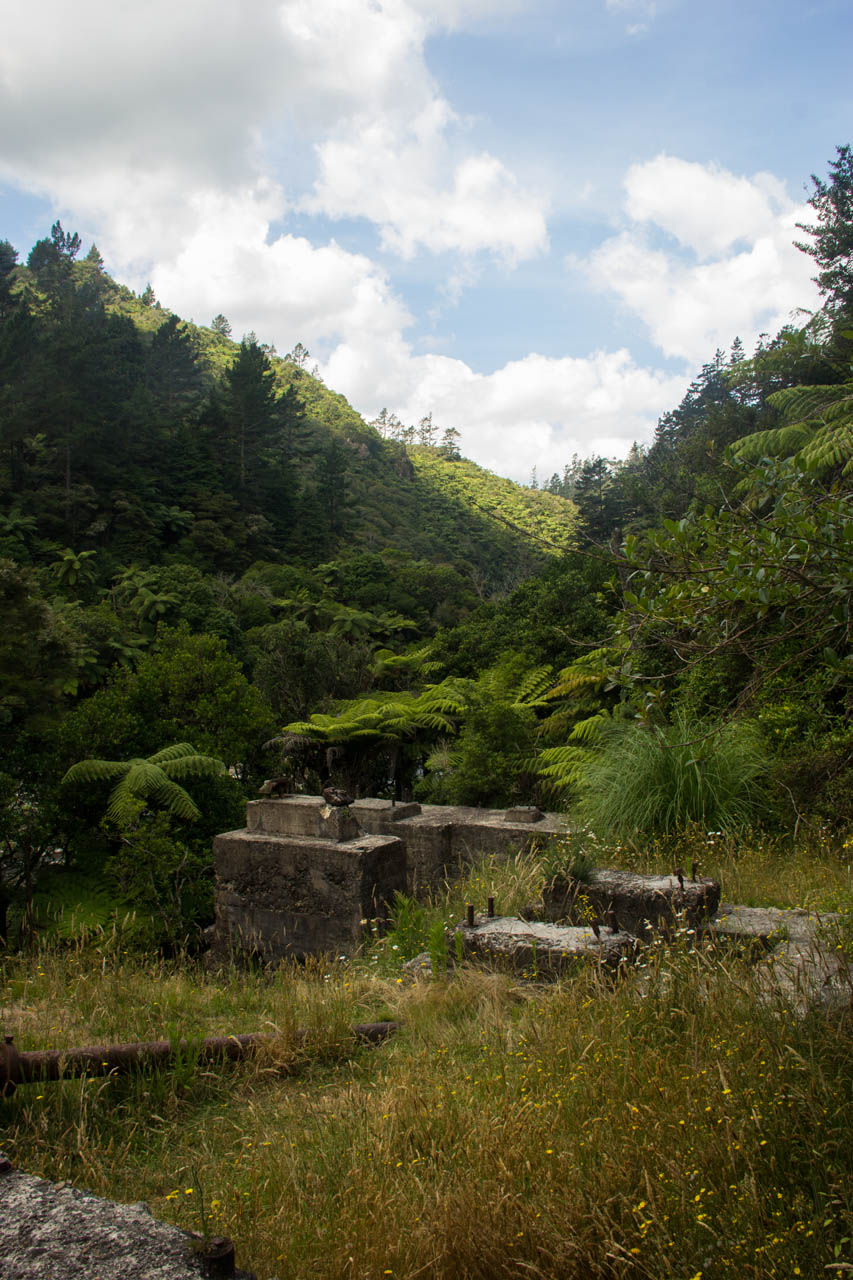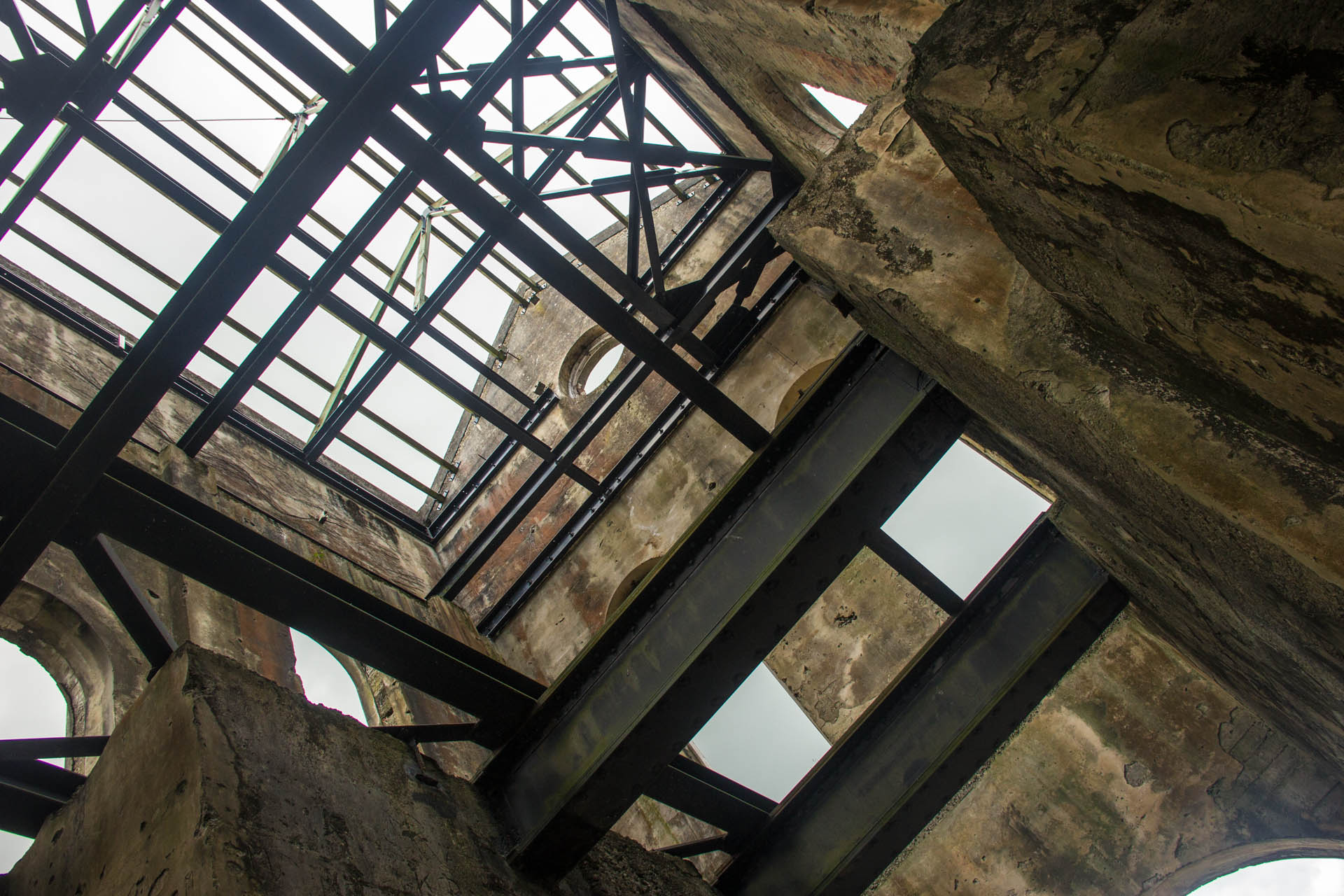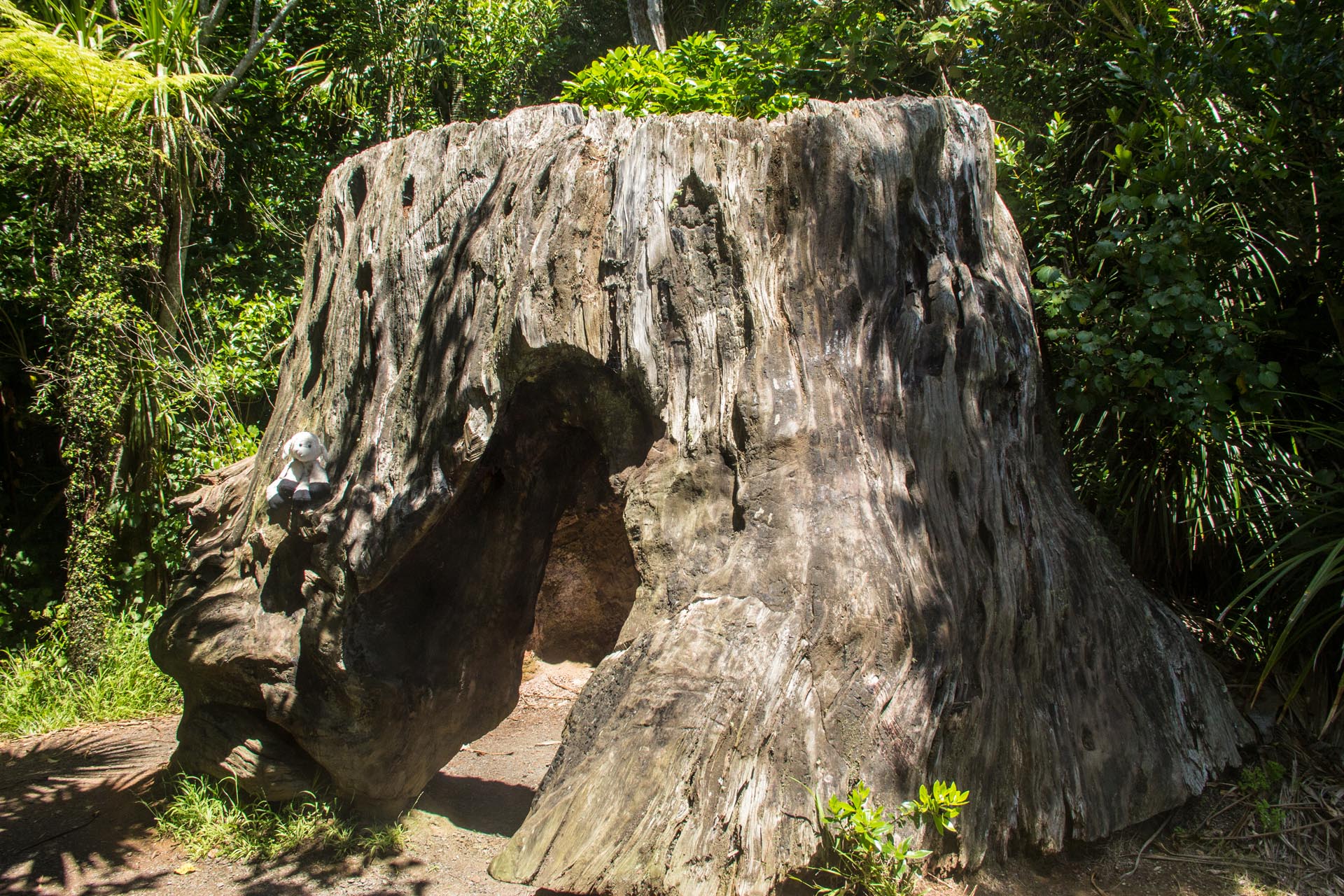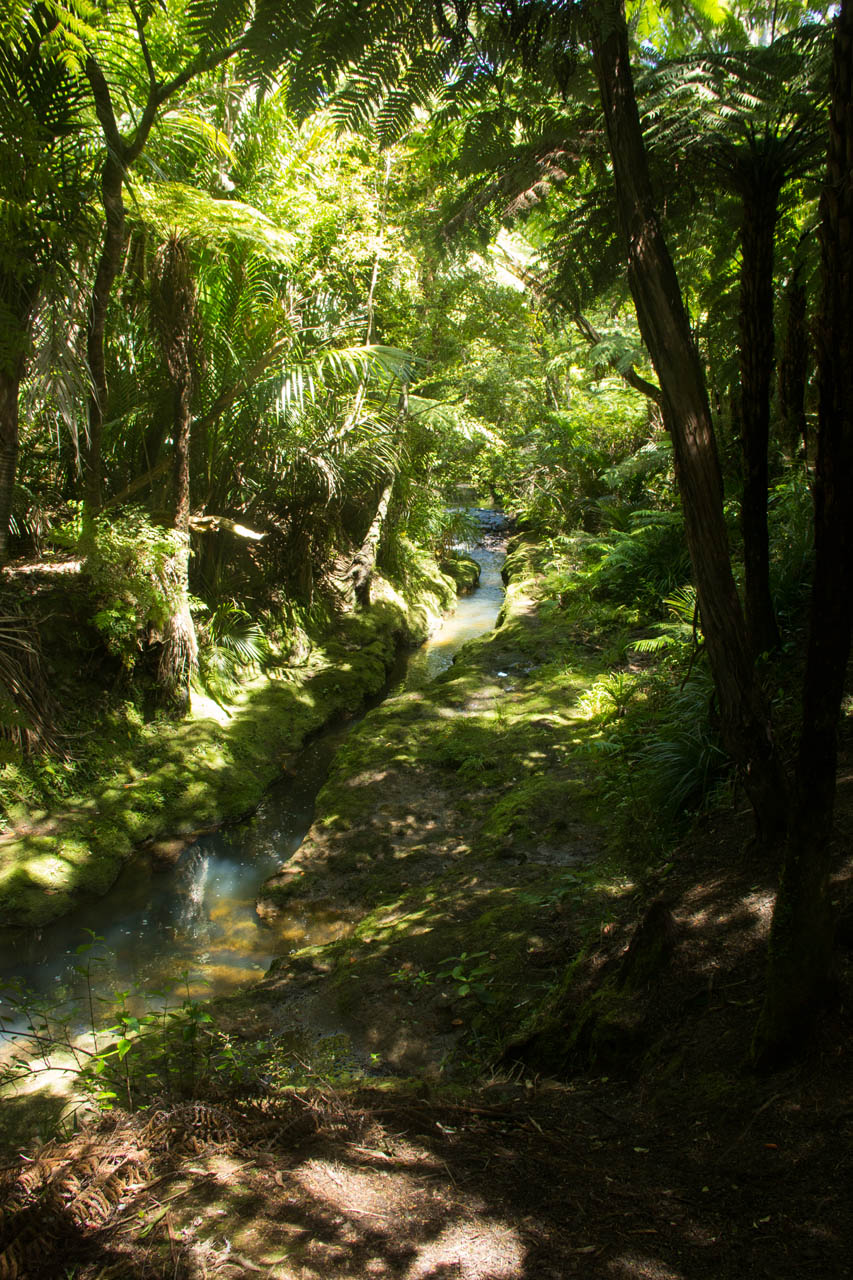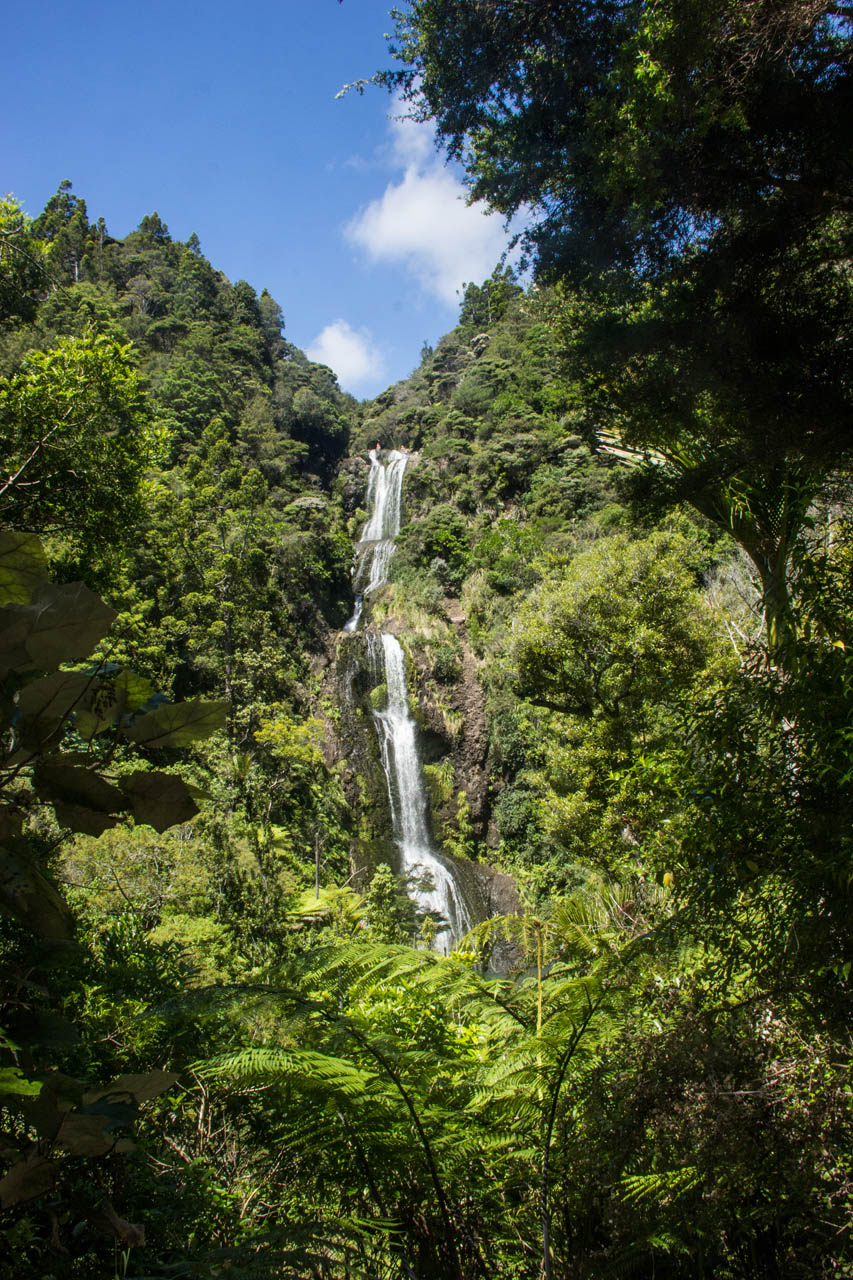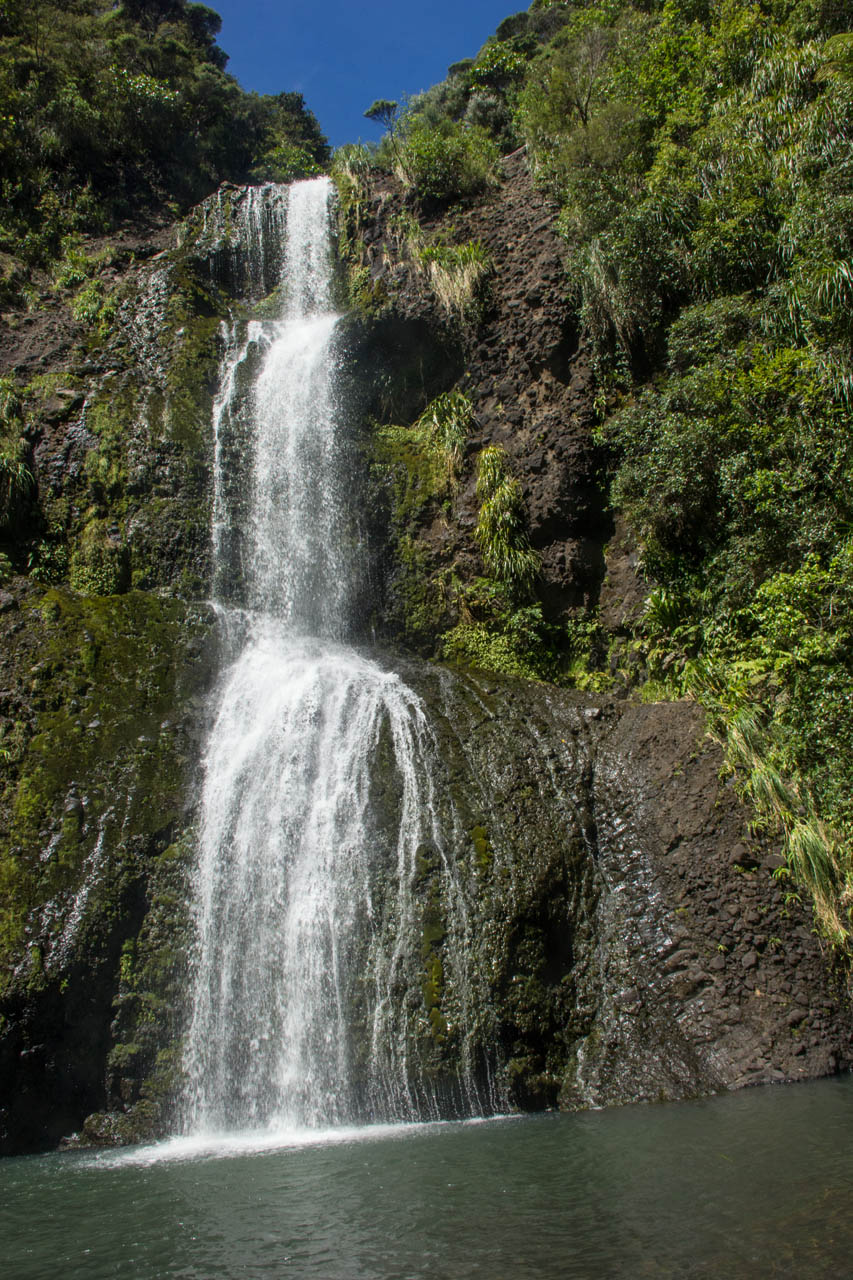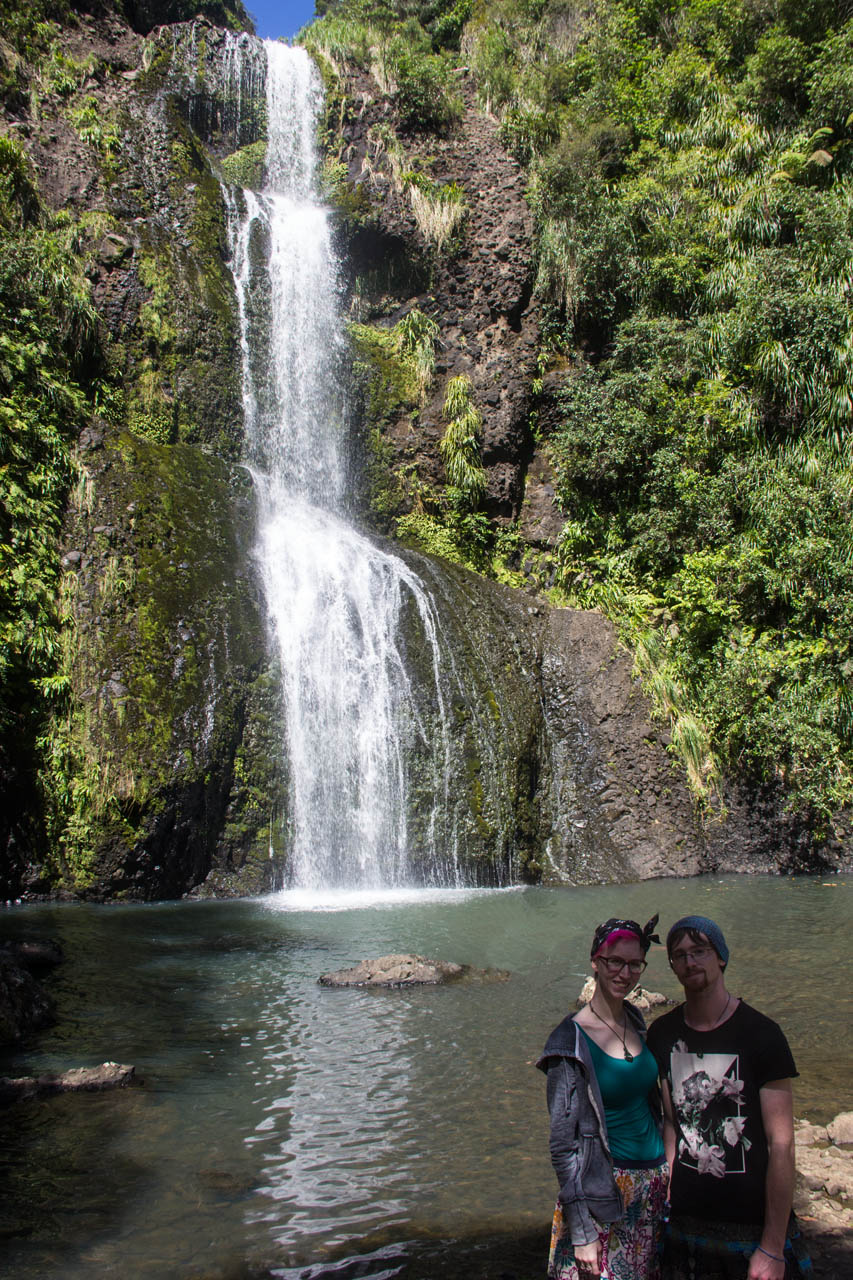In Which our blogger reminisces on the past, and plans for the future.
Read MoreIn Which the History of Gold is Deceptively Rusty (but still pretty awesome)
The next New Zealand weekend adventure found us driving down winding mountain roads on a day that seemed unbearably hot in the sun, yet just the right side of chilly in the shade. It seemed the former wasn't much of an issue, because the place we were going had plenty of trees- not to mention some other pretty wonderful things:
Welcome to Karangahake Gorge! Aside from its position as a truly spectacular piece of nature, this area is filled with the rich and ongoing history of its own: Gold. I'm used to elementary school stories of men heading west to California to pan for gold in the rivers, but this venture was a little bit more subterranean. You're looking at a turn of the century gold mine, and although mining here was suspended decades ago, there is still as they say, gold in them there hills.
Karangahake Gorge is now a reserve space with some truly fabulous walking trails that I will get to in a minute, but also some pretty great informational signage about it's history. I may or may not be a huge nerd about informational signage- it's just nice to see a thing, and then learn about the significance of that thing, is all. Example: this is the view looking over the main battery. Excavated dirt (with the gold ore mixed in) was brought to this building using water from the river, where it was pulverized ("battery" like "battering ram" not the kind you stick in flashlights. This was before widespread electricity was a thing) -so the gold could be extracted. At one time, this area was responsible for more than 60% of the gold production in New Zealand.
There are a few trail options around Karangahake Gorge, but I was informed that the underground pump house and windows walk were going to be our best options. The walking path here follows what was previously train tracks: used to carry gold ore out of the mountains. It's carved into solid rock at the edge of the gorge with a very solid railing to protect curious types from the 50- to 75- foot drop into shallow, rocky water below. In some areas, the tracks have themselves experienced that fall. The twisted, mangled remains of steel and the occasional rail road tie or pipe have settled in the water below, and a new trail has been carved deeper into the gorge next to the washed out area.
Although it's a reserve, and meant for exploration- some areas of the mine are still dangerous and closed off to the public.
Gotta keep those hobbits from sneaking through the mine shafts, you know. Pesky Bagginses and their shortcuts and invisible gold rings. I wonder if there's invisible gold in these mountains!?
But what's this ahead? Could it be? My first ever real live swing bridge?!
We paused for a photo-op, of course, because- let me 'splain you a thing'-when you've spent the majority of your life (and all of your independent adventuring life) smack in the middle of the Midwestern United States- there are no swing bridges. This is because in the Midwestern United States there are no hills to connect with bridges. Everything is flat. Flat and ocean-less and full of farms with corn and cows. Swing bridges and oceans were two things I wasn't really sure I needed until I had experienced them, and let me tell you, swing bridges are pretty awesome.
Say Cheese!
The swing bridge took us up a path to a sign that said the underground pump house walk was currently closed- disappointing, because that just sounds pretty awesome. We hypothesized that there were structural issues and hoped they were temporary. Karangahake Gorge is a day-trip's drive from Auckland, and I intend to go back to see if it's open. We did, however, get to experience the famous 'Windows Walk'.
After a great many stairs (so many stairs...) we follow a dark tunnel cut into the side of the mountain. From the main tunnel, several auxiliary tunnels are carved both right- further into the mountain, and left- out to the steep cliff and overlooking the river. These left tunnels end in 'windows' which we use for light as we wander through, and which the miners used to deposit whatever they dug out of the mountain into waiting train cars below. From one of the windows, we looked down and saw the swing bridge we crossed to get to this point:
About halfway up the left side of this photo is a little dark spot- that's the entrance to the Windows Walk- at the top of the stairs. Unfortunately, this area was also plagued with some structural issues. Only half of the walk was open, after which a barricade forced us to turn around and head back. Usually, the carved tunnel goes all the way back to the beginning and deposits you in the parking lot where you started, but hey- another reason to go back, right? We took a little detour to follow that train track from before in a new direction- here you can see the old path falling away and the new path next to it.
Some of you may recall that I did a semester-long black and white film photography study on the process by which nature constantly attempts (and succeeds) to break down and take back the byproducts of human intervention. This place was ripe with exactly that- old, rusty bits of machinery abandoned by anxious entrepreneurs on to the Next Big Idea, the worn train tracks and water pipes still in place amongst new growth of trees and shrubberies. As soon as we humans turn our back on something, nature begins the slow reclamation process.
There are some opportunities to climb around on the old machinery- or if you're a huge nerd like me, to take pictures of it. It seems in every capacity like the miners rushed out as quickly as they rushed in- leaving the slowly rusting detritus of their trade wherever it happened to land.
I wonder if the miners appreciated the views they had in these mountains while they were prospecting. Probably not, deep in the belly of the mountains, but maybe when they came up for air. This place is nestled amidst mountains and is a beautiful thing all it's own. Maybe it was less so when the miners were uprooting it for minerals but nature has had the better part of a century to take it back now, and she's done an admirable job softening its hard edges.
After that healthy dose of green, and the positivity that is nature reclaiming land after the mines were abandoned- we drove a little further to an actual, real-live present day mining town with an active pit mine.
Things happen a bit differently these days, with open pit mines instead of tunnels and shafts. There is a building down there, a house-sized office of some sort- and heavy machinery for the digging of the gold, but everything is miniscule in comparison to the size of this hole in the ground. There were guards patrolling the top of the mine (five, by my count)- probably to keep hooligans and activists from causing problems. I wonder if they get that a lot. The Kaimai ranges (Where the Karangahake Gorge Mine was located) are still filled with gold, but the protected land status means it can't be mined. Currently. This area wasn't so lucky, but given enough time after it's abandoned in search of more lucrative ventures- I have confidence that nature will take back this pit and make it once again beautiful. With our back to the pit mine buzzing with activity, we were met with a very interesting site: at the end of a pair of tracks was a suspiciously old looking building with a suspiciously new looking foundation.
The Cornish Pump House was a relic of bygone days when water was used to power the mines. It fell out of use when it was replaced with electricity, but was preserved because of its historic significance. The informational signage here was a little sparse, but between that and the internet we figured out the basic story: In 2006, surveyors realized that the ground the old pump house stood on was unstable because of the mining operations right next door, and a very large effort was made to relocate it. The tracks are teflon-coated concrete pads which the pump house was slid along on for 300 meters to its new resting place as you see it today. Visitors can wander around inside and see how the operation worked (and which spots are now the best places for bird's nests as they flit about above...) and if you're a huge nerd like me, take pictures of the architecture.
It's sort of nice to see the old parts standing watch over the new things, as if to say that everything will settle back into its rightful place eventually. I love adventures like this- and it's not often you get to see the progression of history right up through present day- even if the present day part isn't exactly all warm and fuzzy. Who knows what these places will look like in a century- they've certainly changed a lot in the previous century. It might just be that I have a soft spot for historic places, and you know how exciting the Piha adventure was- how am I supposed to pick a favorite, though? Was Piha better than Karangahake Gorge? I'm refusing to answer that question. On principal.
Where there's a will, there's a Waterfall. (Part 3)
Welcome to the third and final chapter of Containment Issues! As promised- although I don't know why you'd be specifically interested in such a thing- there are no beaches to be seen in this post. There is, however, a variety of other cool stuff to make up for it, so I don't feel too terrible about the beach deprivation. We took a break in the middle of the day- when the sun was at its most intense, to take a short drive away from the beach for a bit of a hike. It was welcome respite from the sun, as well as an opportunity for some great pictures!
Sheep of course wanted in on the action, and insisted on taking some photos before we got too far. He's decided to opt out of the usual selfie instead for a game of hide-and-sheep. I do love a good game of hide-and-sheep, though, so I was willing to partake.
Sheep learned that much of this area was a forest of giant Kauri trees- as soon as the Europeans settled in New Zealand, they discovered that big trees make awfully nice big boats, so most of these ancient Kauris are gone, and what few are left are endangered. Regrowth attempts are being made, but these fellas are slow growers. They can do in 50 years what a white pine tree does in 10. There are plenty of remnants of the huge timber business that marks the beginning of European residence in New Zealand- Piha sits near an old mill, and the wilderness is littered with pieces of Kauri like this one that were too large to be moved.
As we walked further into the forest, I soon suspected that I had secretly been teleported to the Amazon and was currently wandering around somewhere in South America. Beam me back to New Zealand, Scotty!
It was a beautiful day outside- low humidity and an ocean breeze, and a temperature in the mid-eighties made for perfect exploring weather. (I'm back in the States now, I get to use Fahrenheit again!). Basically, it was a pretty common December afternoon. As this was my first time on a walk in the woods ("the bush" if you're keen on picking up any isms) I was paying close attention to the differences in plant life. This, for example, is a Spleenwort:
Early Europeans, in their infinite wisdom, were of the opinion that if a person consumed the above-mentioned Spleenwort, they would be- you guessed it! Cured of any spleen-related afflictions. Now, they'd be hard pressed to tell you exactly what those afflictions were, because nobody really knew what a spleen was at that point, but I guess they thought it was worth a try. Eating strange spotty plants in the forest never killed anyone, anyway...right?
As it turns out, the only thing Spleenwort does is taste gross. No effects on spleens, positive or otherwise.
Here's a more common sight- a palm I saw frequently around New Zealand for the rest of my time there:
This is the Nikau Palm: the only palm species native to New Zealand. Besides my initial awe at palm trees in general, this one has a more specifically cool aspect: While most trees have growth rings for every year, Nikau palms have growth bands- every year, a new set of palm fronds grows and falls off, leaving a new 2 or 3 inches of trunk growth. You can see this starting to happen at the top of my photo. The process, therefore, of dating a forest which contains Nikau Palms becomes much easier and less harmful to the trees-since all you have to do is count the bands on a few Nikau palms. No trees were killed while determining the age of this forest.
At this point, it is possible that I was complaining slightly (only slightly!) about the amount of hill-climbing that had been occurring, but- and let me tell you, this became a recurring theme on this trip- the view ahead more than made up for it.
And then, impossibly, the view got even better:
Meet the Kitekite falls (which is pronounced kitty-kitty. In my opinion this makes the whole experience much better, but that's just me.) This was my very first ever southern hemisphere waterfall! It's actually three waterfalls in a tier, with swimming holes at the top, one tier down, and at the bottom. And no, it does not swirl in the opposite direction.
The first view is actually just a lookout and is still a fair distance away- after 15 or so more minutes of hilly walking, we reached the base of the falls. (Note: if you are reading this as a potential traveller to New Zealand, first- yay! Do the thing! and second- I recommend good walking shoes that won't skid. You'll be fine until you get to the falls but the rocks there are slick when wet, and part of the path goes underwater. Expect to get your feet soggy unless you take your shoes off.)
Let me just... okay. I know about waterfalls. I learned about tides and starfish in school and it was still weird to see them in real life, but I had seen waterfalls before. Big ones, too. Niagra falls. But really, there are so many waterfalls in New Zealand, and every single one of them is beautiful, big, and fabulous and they all tell such stories! I will never get tired of waterfalls, especially New Zealand waterfalls. I ended up seeing so many waterfalls here, in fact, that the rest of them are going to get their very own blog post- that's how many there were. Each one is so very different and unique from all the others.
Sheep, not to be left out of the picture taking fun, also decided to take a waterfall selfie- his first of many. He was the luckiest anyways, he got to be carried up. I had to walk.
I stuck my toes in the water, but we didn't go swimming. After a few more pictures, and some general staring-with-my-jaw-figuratively-on-the-ground, we headed back. Chronologically, the Meeting Of The Starfish happened next- but you already know about that.
I know, after the Beautiful Thing that was meeting all the Piha sea life, this seems short by comparison, but this was such a different feeling, wedged neatly in between the black sand and the starfish. See, we don't have beaches in St. Louis. At all. Like I said, I could count my beach-related experiences on three fingers before New Zealand. But we do have forests- I've spent a lot of time surrounded by trees, I've seen waterfalls, watched little steams flow lazily under my feet. This was my first experience with New Zealand as the same, but different- my first taste of the New Zealand bush, and all its native plants and animals. It was as if I was coming back to something I knew very well, but that something had shifted one step left in my absence. A parallel universe, almost. I was in a familiar forest, but I was surrounded by unfamiliar plants, and the sounds of unfamiliar birds. Here, it was like I was looking around at something I thought I knew for the first time. There are so many forests all over the world, and they're all the same but different. Some have palms, some have pines- some have young Kauri regrowth just starting to peek up amongst the canopy, trying to grow an empire that was lost to loggers decades ago.
I would like to visit more forests, and every time I do I'll be in search of this same feeling- the feeling that everything I thought I knew about a thing just took one step sideways, and that I've learned to expand my horizons just a little bit more.


